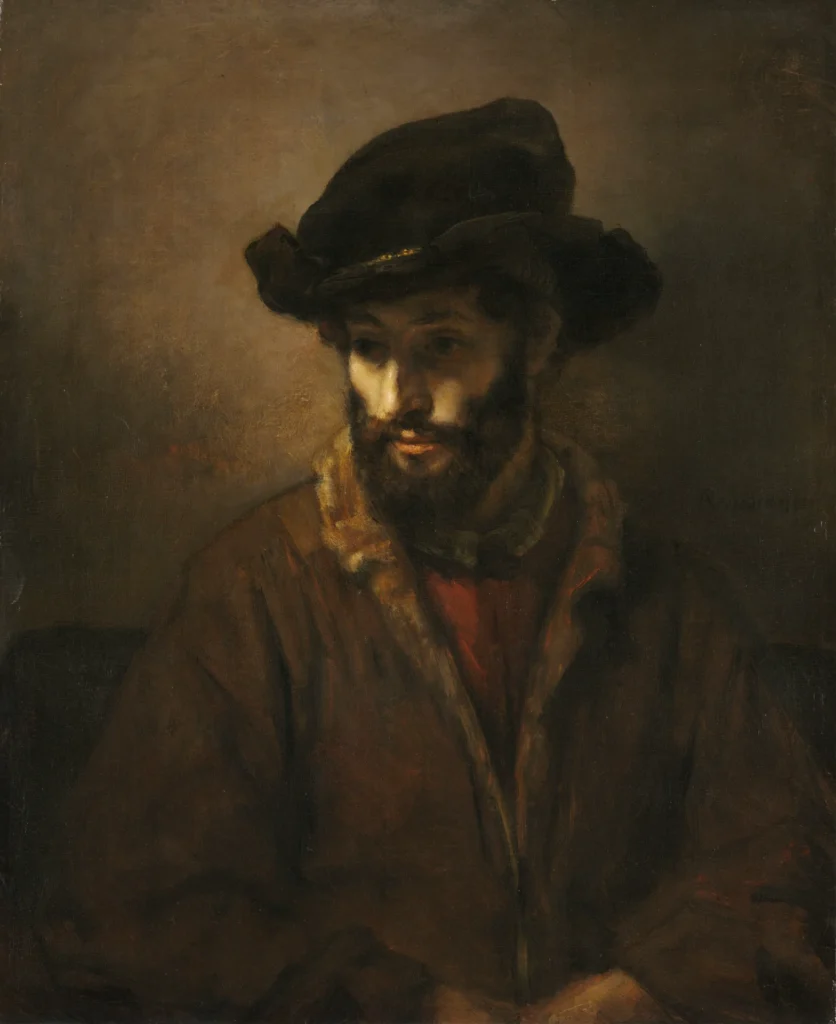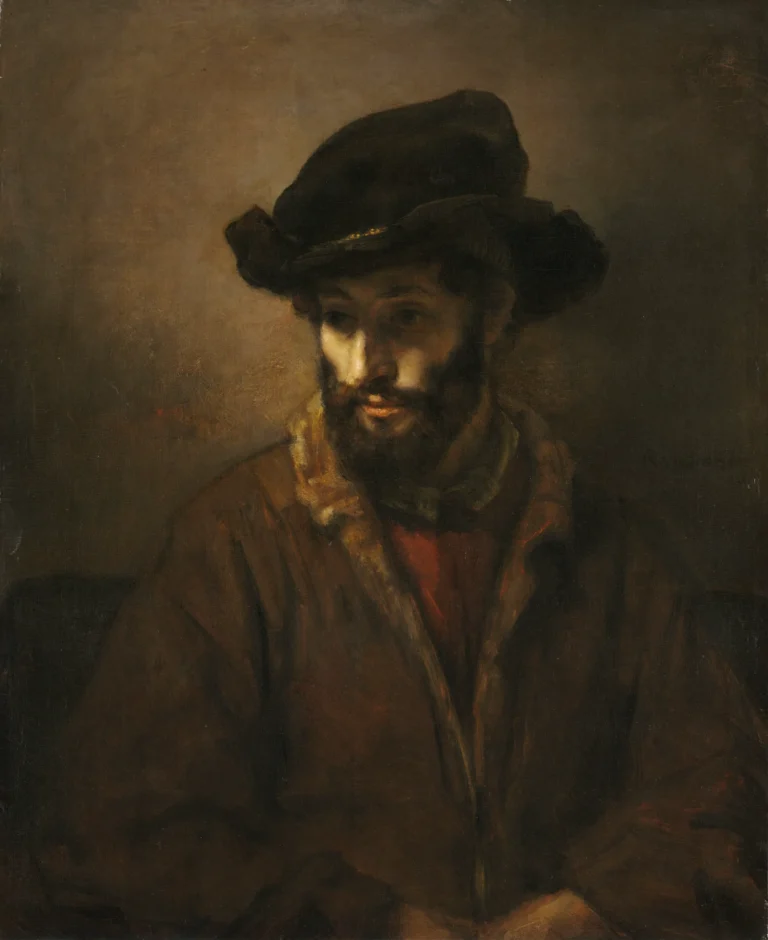A Bearded Man Wearing a Hat (1655-1660)
A Bearded Man Wearing a Hat showcases a deeply contemplative figure adorned in a broad, thinly painted cloak and hat, indicative of the unique qualities found in Rembrandt's workshop. Despite debates over its authorship, the painting captures the essence of the subject's introspection, contributing to discussions about identity and representation in 17th-century Dutch art. Initially believed to be a representation of Baruch Spinoza, this interpretation has been re-evaluated, highlighting the complexities of interpreting historical identities.
1655 - 1660
About the Artwork
Did You Know
Liked what you see? Add it to your collection.
Enjoyed reading? Share it.
... continued
Key Details
Artist and Date: Attributed to the studio of Rembrandt van Rijn, created between 1655 and 1660.
Medium and Dimensions: The painting is an oil on canvas work. The framed dimensions are 119.4 x 104.1 x 14.6 cm (47 x 41 x 5 3/4 in.), and the unframed dimensions are 84.5 x 69.2 cm (33 1/4 x 27 1/4 in.).
Provenance and Location: The painting is part of the collection at the Cleveland Museum of Art, gifted by the Hanna Fund in 1950 (accession number 1950.252). Currently, it is not on view.
Description and Analysis
The painting depicts a bearded man wearing a hat, and it is characterized by a broad and thinly painted cloak and hat, suggesting it might be a product of Rembrandt's workshop rather than the master himself. Despite this, the work still displays Rembrandt's characteristic interest in the sitter's introspection, though the figure's thoughtfulness is described as comparatively superficial.
Availability and Access
The Cleveland Museum of Art has made this work available under their Open Access Initiative, allowing it to be downloaded, printed, and shared without permission.










